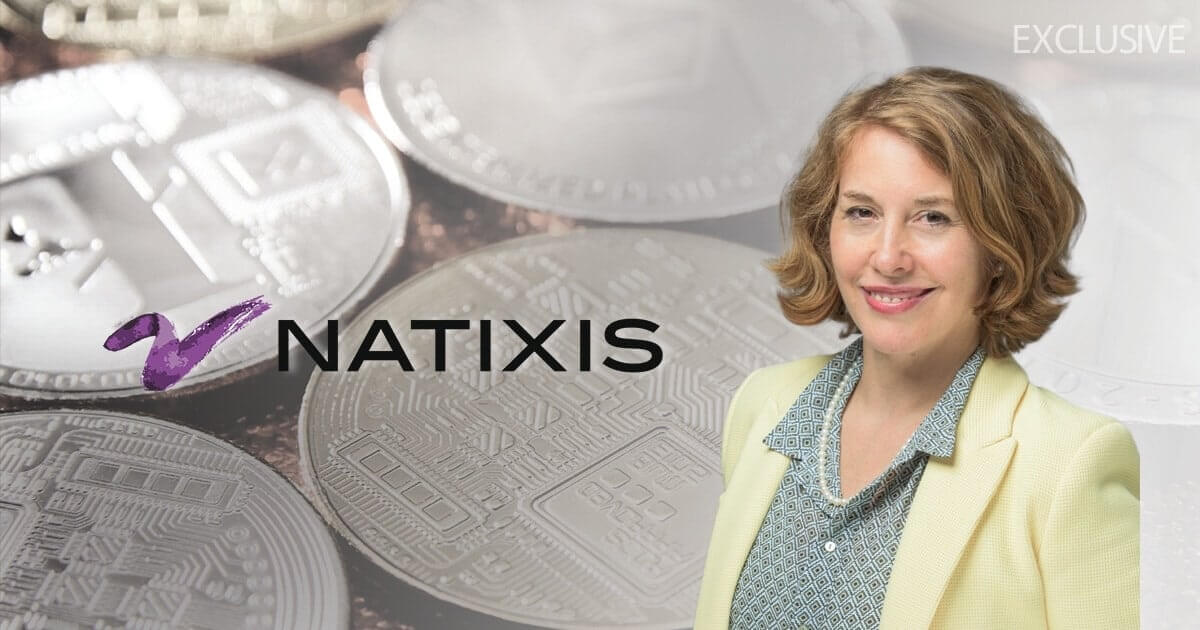Central Bank Digital Currencies Unmasked by Dr. Alicia Garcia-Herrero at Natixis
Sarah Tran Nov 01, 2019 10:00
Blockchain.News has been delighted to reach out to Garcia-Herrero for her to share some thoughts on central bank digital currencies around the world. Central bank digital currencies (CBDCs) have increasingly sparked interest in recent years. With the notion of China’s central bank, People’s Bank of China (PBoC) announcing its plan to issue its digital currency (DCEP) and Facebook’s Libra stablecoin emergence, the world has been paying more attention to CBDCs.

Central bank digital currencies (CBDCs) have increasingly sparked interest in recent years. With the notion of China’s central bank, People’s Bank of China (PBoC) announcing its plan to issue its digital currency (DCEP) and Facebook’s Libra stablecoin emergence, the world has been paying more attention to CBDCs.

Alicia Garcia-Herrero, Asia Pacific Chief Economist at Natixis shared her insights into CBDCs at an event in Hong Kong in September this year. Garcia-Herrero also serves as a Senior Fellow at European think-tank Bruegel and is an advisor to the Hong Kong Monetary Authority’s research arm (HKIMR) and the Asian Development Bank. In addition, Garcia-Herrero has been very active in international media and she has been nominated TOP Voices in Economy and Finance by Linkedin for her leadership thoughts.
Blockchain.News has been delighted to reach out to Garcia-Herrero for her to share some thoughts on central bank digital currencies around the world.
Why are central bank digital currencies considered as an autonomous factor for monetary policy implementations?
As autonomous factors are items which are not controlled by the monetary policy function of the central bank, CBDCs could compete with bank deposits and draw liquidity away from the banking system depending on how CBDCs are regulated by central banks and, in particular, whether CBDC holdings at the central bank are remunerated positively. This could raise the funding rates of banks, reducing their margins.
Do you agree that the issuance of CBDCs can strengthen the pass-through of the policy rates to the money market and deposit rates? What are the crucial design features of CBDC to enhance the pass-through?
Some CDBCs, especially those used at the retail level, allow central banks to have direct monetary interaction with the public, which reduces the role of banks in intermediation. One could even think of a perfect pass-through but, on the other hand, there is no real intermediation as those funds cannot be lent on to borrowers. It would be some kind of narrow banking.
Furthermore, given that central banks set the CBDC interest rate (the CBDC interest rate could become the policy instrument) and that CBDCs could be used by the general public for daily transactions, the policy rate transmission will be better on paper but hard to think how such funds will be intermediated.
In terms of design features most research seems to have focused on creating design features to avoid a CBDC run (out of bank deposits and into CBDCs), such as enforcing daily limits on the number of bank deposits that can be converted into CBDCs.
How does the interest-bearing characteristic of CBDCs affect the effectiveness of the monetary policy? Do you think interest-bearing CBDCs can serve as an effective lower bound of interest rates and thus facilitating central banks to control market interest rates?
CBDC, being a central bank’s liability, can be interest-bearing or not (or even negative if needed) as opposed to cash. If set negatively, it basically can allow a central bank to bypass the zero-bound. In order to assess the impact of CBDC on the term structure of interest rates, what are the factors to consider?
A CBDC (especially a positive interest-bearing CBDC) has the potential to eliminate cash. Gradually as cash gets converted into electronic money, it is likely to get invested in capital market instruments. This could have a downward impact on interest rates. The proportion of cash which is today maintained by households for day to day transactions may get invested in short term interest rate instruments that are easy to liquidate. As a result, short term interest rates may fall more than long term interest rates.
Some academics suggested that CBDCs can enhance financial stability, similar to the concept of “narrow banking.” Do you agree? What are the main differences between narrow banking and CBDCs?
Under narrow banking, a deposit-taking institution may invest its deposits only in safe (risk-free) and liquid assets like government bonds. Given that deposits are invested in risk-free assets, deposit insurance is not required, and banks need not be bailed out.
Lending to corporations and to the general economy is left to other institutions (non-deposit taking finance companies) that raise funds through the wholesale market.
Like narrow banking, the risk of credit default (and the need to insure deposits) is reduced significantly with CBDCs as the liability shifts from risk-taking commercial banks to risk-free central banks.
The disadvantage of narrow banking is that there is no intermediation so the cost of risky lending will increase enormously, hampering growth.
What are the possible impacts of CBDC on seigniorage?
Seignorage, the profit made by a government by issuing currency, will depend on the interest rate paid on the CBDC and the relative cost of producing CBDC versus the costs of producing the equivalent amount of cash.
.jpg)